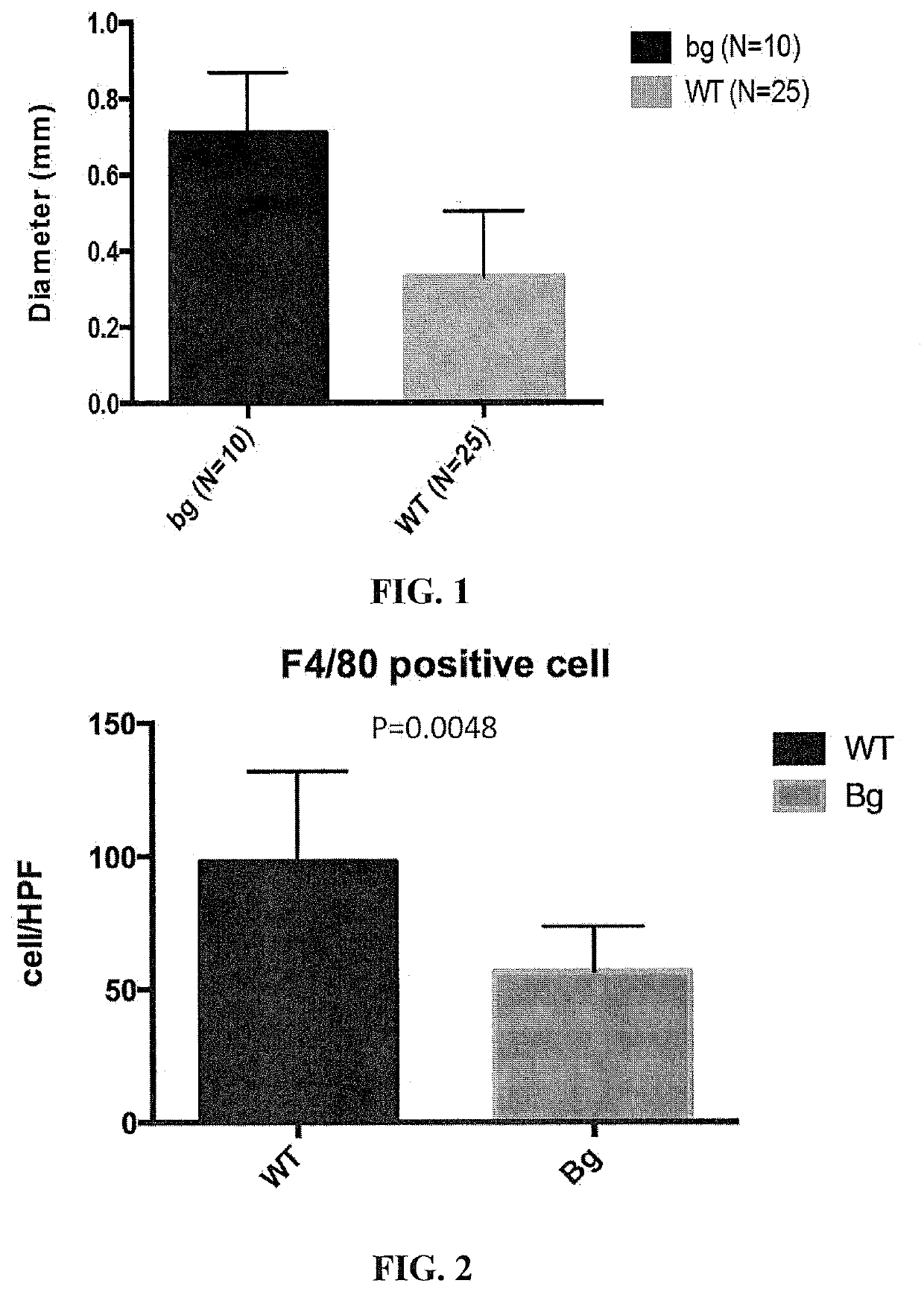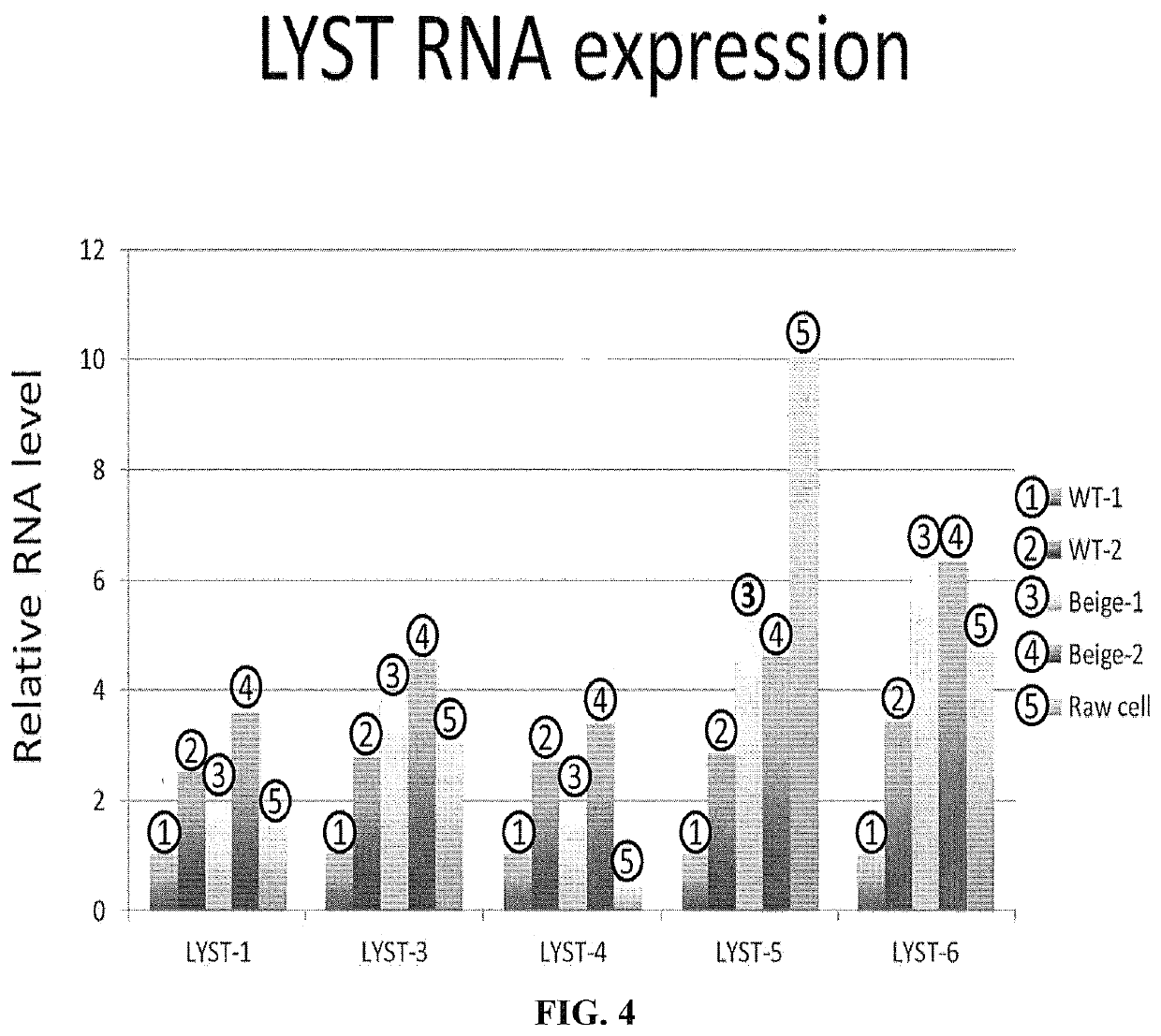Compositions and methods for Anti-lyst immunomodulation
a technology of immunomodulation and compositions, applied in the field of compositions and methods for anti-lyst immunomodulation, can solve the problems that the amount of one or more lyst inhibitors does not prevent vascular neotissue formation, and achieve the effects of reducing or preventing the formation of scar tissue, promoting healing, and reducing or preventing the development of venous thrombosis
- Summary
- Abstract
- Description
- Claims
- Application Information
AI Technical Summary
Benefits of technology
Problems solved by technology
Method used
Image
Examples
example 1
The Beige Mutation Reduces Stenosis in Tissue Grafts
[0253]Methods and Materials
[0254]Tissue engineered vascular grafts (TEVG) were developed by seeding autologous bone marrow-derived mononuclear cells onto a biodegradable tubular scaffold fabricated from a polyglycolic acid-fiber tube coated with a 50:50 copolymer of poly lactic acid and polycaprolactone.
[0255]A murine model for evaluating TEVG function was developed in an effort to elucidate the cellular and molecular mechanisms underlying the formation of TEVG. The inferior vena cava (IVC) interposition graft model is a validated model for investigating the use of vascular grafts in a low pressure, high flow circulatory system similar to the Fontan circulation. This model was used extensively to study neotissue formation in the TEVG.
[0256]A biodegradable conduit graft composed of PGA-PCL / LA was implanted into the inferior vena cava of wild-type mice and beige mutant mice, respectively, without cell seeding. Grafts were explanted 2...
example 2
The beige Mutation Reduces Macrophage Infiltration Into Tissue Grafts
[0259]Methods and Materials
[0260]It has previously been demonstrated using the murine model that vascular neotissue formation arises from cells derived from the host and that the process of vascular neotissue formation is orchestrated by the immune system, specifically host-derived macrophages. Excessive macrophage infiltration leads to stenosis, while inhibition of macrophage infiltration prevents neotissue formation.
[0261]The number of macrophages in the explanted grafts described above in Example 1 was measured for both beige and wild type mice. Immunohistochemistry was carried out on tissue sections of each graft to characterize the number and morphology of endothelial cells in each group, using an antibody specific for the CD31 cell marker.
[0262]Results
[0263]The TEVG implanted in the beige mice exhibited significantly less macrophage infiltration than TEVG implanted in the wild type mice at 2 weeks after surge...
example 3
The Beige Phenotype Arises From a Mutation in the LYST Gene
[0264]Methods and Materials
[0265]The beige mutation arises from a spontaneous mutation of the LYST gene (FIG. 3). For analysis of protein expression, 6 different primers, designated LYST1, LYST3, LYST4, LYSTS and LYST6, respectively, were designed to cover the complete LYST gene region. The LYST-5 primer covered the area of exon 52 that included the amino acid mutation identified in the beige mouse genotype. Raw cells were used as a standard to calculate relative mRNA levels.
[0266]Results
[0267]The specific mutation responsible for the beige phenotype in Beige mice was identified. The full length LYST gene encodes a 3801 amino acid polypeptide. The mutation of LYST occurred on exon 52 resulting in deletion of the Amino acid isoleucine (i1e3741de1) (FIG. 3).
[0268]Molecular analyses demonstrated that there was no significant difference in expression of mRNA between both groups. Despite equivalent levels of transcription of the ...
PUM
| Property | Measurement | Unit |
|---|---|---|
| pH | aaaaa | aaaaa |
| pH | aaaaa | aaaaa |
| pH | aaaaa | aaaaa |
Abstract
Description
Claims
Application Information
 Login to View More
Login to View More - R&D
- Intellectual Property
- Life Sciences
- Materials
- Tech Scout
- Unparalleled Data Quality
- Higher Quality Content
- 60% Fewer Hallucinations
Browse by: Latest US Patents, China's latest patents, Technical Efficacy Thesaurus, Application Domain, Technology Topic, Popular Technical Reports.
© 2025 PatSnap. All rights reserved.Legal|Privacy policy|Modern Slavery Act Transparency Statement|Sitemap|About US| Contact US: help@patsnap.com



